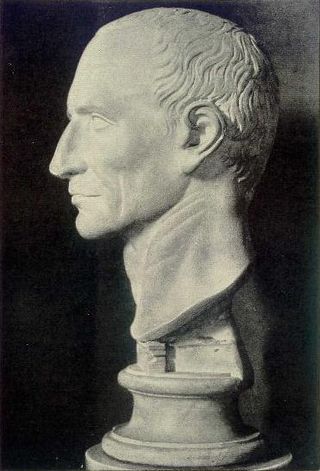The mystery of Caesar's ears

I have been back in Europe for a few days. The real reason was to go to the European Research Council in Brussels, where I am on a "Starting Grants" awarding panel... which gives large grants of more than a million euros, to young scholars in all research field (mine is 'The Study of the Past"). Interestingly the EU has not contracted these awards in the face of the recession, but expanded them, on the grounds that research is vital investment for the future.
Anyway after a bit of a rocky start 4 years ago (when the bureaucracy seemed to live up to all those Daily Mail style EU parodies.. but they still couldnt get the wi-fi to work),the whole process is now very smooth, thanks this year especially to our two EU administrators Volker and Frank (nice kids -- as they are bound to seem from my age -- who appear to speak most EU languages going).
It's a huge time commitment, but it has become one of my favourite jobs -- largely because of the chance to meet all the other people on the committee and work with them. Sure, I might have come across Carlo Ginzburg or Przemyslaw Urbańczyk at conferences... but you get to know then in a completely different way if you are working with them, and discussing the relative merits of research proposals.
That lasted Monday through Wednesday night (and we meet again to interview the candidates in the summer). But as it was actually cheaper to change in London and carry on by Eurostar than go direct from Washington to Brussels, I squeezed in, during the lay-over, a flying visit to the TLS (if you don't go and look at the books or the copy for 10 weeks, the mountain of print that confronts you is a bit dispiriting) and to the BM -- both conveniently near the Eurostar terminal.
The reason for going to the BM was to see one Caesar (illustrated above) -- and thanks to all there who got him out of his case and discussed him with me.
This came into the Museum in 1818... and was 'identified' as an ancient bust ofJulius Caesar in 1846. Then for more than a hundred years he was the canonical Caesar, until in the early 1960s Bernard Ashmole definitely dethroned him and showed him a (probably eighteenth-century) fake. One of the key indicators is the clear sign that his skin has been artifically "distressed" -- that is bashed with something rough -- to make it look old.
As always, when you actually look hard at this sculpture, other oddities appear. What really surprised me was what had happened behind his ears. On both sides, but more pronounced on one than the other, there were a series of clear drill holes, twenty or so, half a centimetre apart, running from the top right round to the lobe. You would have thought they were intended to attach something (if they were round his brow, it would have been a diadem), but nothing could have been attached round his ears.
So what were they? And does it make any difference to the arguments about his fake status?
I am not publishing a picture, because the BM nicely let me take some for my own use -- and I don't think "own use" includes blazoning them round the blogosphere. But if anyone want a look for serious study (no simple curiosity please.. else it will take me hours and hours, when I have lectures to write), I can let you have a look on a "one to one" basis.
Mary Beard's Blog
- Mary Beard's profile
- 4110 followers



